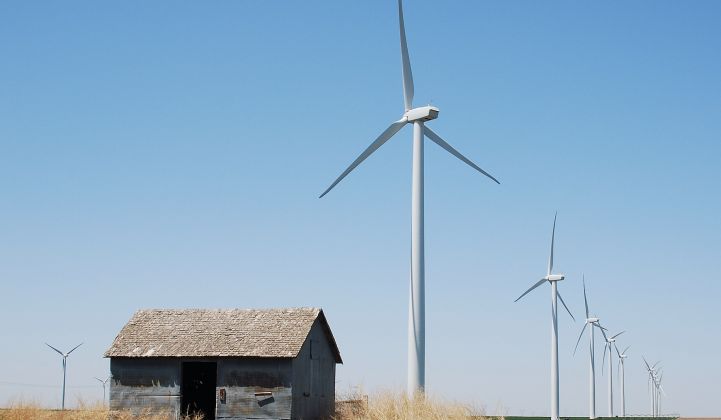The 2018 election is already remaking the landscape for state-level energy policy.
In the past week, Wisconsin Governor Tony Evers proposed in his budget to decarbonize the state’s electricity supply by 2050, and Minnesota Governor Tim Walz on Monday released his own call for 100 percent clean electricity by 2050. Both are Democrats who won election in November after running on platforms that included support for clean energy.
Separately, legislators in Illinois introduced a bill to make the state’s electricity 100 percent renewable by 2050.
The developments come after the Green New Deal has put ambitious clean energy programs on the agenda in Washington, D.C. That resolution, which calls for a 10-year mobilization to overhaul and decarbonize the national economy, has yet to receive a vote, and stands little chance of passing the Republican-held Senate. But states and cities have already taken the initiative to advance their own plans.
“Climate change is an existential threat,” Walz said in his announcement. “We must take immediate action. If Washington won’t lead, Minnesota will.”
Minnesota ups the ante
A 2007 law required Minnesota’s electricity to reach 25 percent renewable by 2025, but the state hit that target by the end of 2017. Walz would up the ante to 100 percent carbon-free electricity by 2050, “allowing each utility the flexibility to choose how and at what pace they meet the standard.”
The key challenge will be eliminating coal, which supplies about 40 percent of the state’s electricity. Nuclear power delivers between 20 and 25 percent in a typical year, and that would stay under the “carbon-free” definition. Natural gas produces the remainder, roughly 10 percent.
Walz recognized that the shift in fuel source would affect communities and jobs, and pledged assistance for helping workers through the change.
The state’s largest utility, Xcel Energy, already set itself a voluntary carbon-free target by 2050. Xcel also operates in Wisconsin.
The governor also proposed to strengthen a policy that gives preference to energy efficiency and clean resources when utilities seek to build new generation. “It would allow for fossil fuel-based power only if needed to ensure reliable, affordable electricity,” the statement noted.
Such a measure would, in theory, limit new build-out of gas power capacity during the deployment of more renewable resources. Depending on how it is implemented, this directive could act as a sort of “clean peak” policy, pushing for storage to deliver wind or solar power during the most valuable hours instead of resorting to gas.
Other states have taken action to avoid large capital investments in gas plants that may not be needed down the road. California regulators and politicians have put a hold on new gas plants. Arizona regulators initiated a gas-building freeze while they deliberate on a grid modernization program, and utility Arizona Public Service recently opted for a shorter seven-year gas contract rather than locking in longer-term commitments.
Lastly, Minnesota would beef up its energy efficiency programs, a move that would reduce the amount of electrical load that will have to be served by clean resources.
A heavy lift in Wisconsin
Wisconsin’s Evers proposed his own carbon-free by 2050 plan in his budget last week.
Proportionally, that will be a heavier lift than in Minnesota. As of 2017, Wisconsin got 55 percent of its electricity from coal and about 20 percent from gas, while nuclear produced 15 percent and renewables 9.3 percent.
Evers also called for funding for energy conservation measures, converting the State Energy Office into the Office of Sustainability and Clean Energy, and directing $10 million from the Volkswagen "Dieselgate" settlement to build electric vehicle charging infrastructure, according to the Wisconsin State Journal.
The proposal as a whole goes further than Evers’ campaign website, which simply states an intention to “[s]trengthen state incentives for renewable energy.”
Green New Deals
The most bullish bet on renewables came from nearby Illinois, where legislators introduced a bill to require 100 percent renewable electricity by 2050, eventually outlawing nuclear power, which currently delivers more than half of overall grid power and about 90 percent of carbon-free power in the state.
That bill contains interim targets that require 45 percent renewables and 100 percent carbon-free electricity by 2030. Such a framework would lead to shutting down coal and gas in the next 10 years, then gradually retiring the nukes in favor of renewables over the subsequent 20 years.
Recent state clean energy programs have varied in how closely they associate with the Green New Deal working its way through Congress.
The Illinois bill foregrounds social justice issues, much like the Green New Deal. Evers and Walz chose not to frame their proposals explicitly in Green New Deal terms, focusing more narrowly on a shift in the energy supply while ramping up clean energy jobs.
Los Angeles Mayor Eric Garcetti invoked the Green New Deal when he declared an end to natural gas generation in his city, and New York Governor Andrew Cuomo used the term to describe his latest clean energy program.
These state-level efforts help by “assembling the building blocks” for a broader Green New Deal, said R.L. Miller, political director of Climate Hawks Vote, which works to elect leaders who prioritize climate action.
“I expected 100 percent clean/renewable energy bills to be popular first on the coasts, but it's if anything more important and more heartening to see them in the Midwest,” she wrote in an email Monday. “Elections do matter!”




